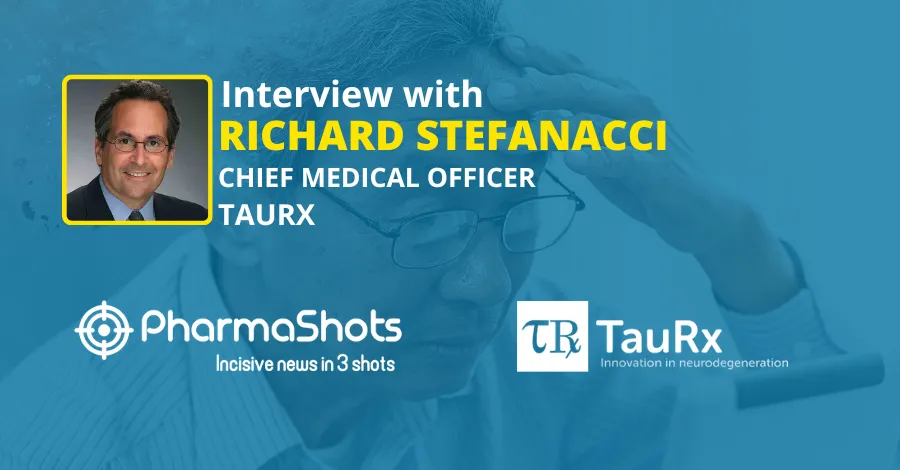
PharmaShots Interview: Sierra Oncology Dr. Barbara Klencke Shares Insight on Sierra's Agreement with AstraZeneca for AZD5153
In an interview with PharmaShots, Dr. Barbara Klencke, MD, Chief Medical Officer at Sierra Oncology share her views on the license agreement for AZD5153 with AstraZeneca to treat myelofibrosis
Shots:
- AstraZeneca signs an exclusive license agreement with Sierra for AZD5153 to expand myelofibrosis pipeline. The agreement will provide a novel compound into Sierra's pipeline to supply therapies for rare cancers
- Sierra plans to initiate a P-II study of momelotinib (JAK inhibitor) + AZD5153 (BRD4 BET inhibitor) in patients with myelofibrosis & will be responsible for global development and commercialization activities. The trial is expected to start in H1'22
- Momelotinib is currently being evaluated in the P-III MOMENTUM clinical trial for symptomatic and anemic myelofibrosis patients and has received the US FDA's FTD for the same. The results are expected in Q1'22
Tuba: Put some light on the key features of the global in-licensing agreement with AstraZeneca? Can you disclose the details of the deal, such as upfront payment and all milestones?
Dr. Barbara: In August, we announced an exclusive global in-licensing agreement with AstraZeneca for AZD5153, a potent and selective BRD4 BET inhibitor with a novel bivalent binding mode.
Through this deal, we plan to initiate a Phase 2 proof of concept study in the first half of 2022, which will examine our investigational JAK1/JAK2/ACVR1 inhibitor and lead compound, momelotinib, in combination with AZD5153 in patients with myelofibrosis (MF), a rare blood cancer.
Under the terms of the agreement, we will pay AstraZeneca an upfront payment of $8 million and certain pre-determined development, regulatory and commercial milestones up to $208 million. In addition, Sierra Oncology will provide tiered royalty payments based on future commercial success, ranging from high-single digits to low double-digits. We will be responsible for the initial Phase 2 trial execution and all future global development and commercialization activities.
Tuba: What is AZD5153? Why did you license AZD5153?
Dr. Barbara: AZD5153 is a selective BRD4 BET inhibitor with a novel bivalent binding mode that inhibits both protein bromodomains, resulting in improved potency and more complete target inhibition.
BET inhibitors have shown great potential in myelofibrosis and some other hematological indications. In addition, evidence suggests that inhibition of both JAK and BET pathways can result in the synergistic reduction of disease and overall improvement in the prognosis of MF. Preclinical and early clinical data suggest that AZD5153 is a differentiated BET inhibitor through its high potency, selectivity, and bivalent binding, which may offer more complete target inhibition relative to monovalent binders.
With its favorable hematologic profile and potential benefits for myelosuppressive patients, momelotinib could become the cornerstone therapy of choice for combination regimens to treat myelofibrosis. We believe the combination of momelotinib with its differentiated mechanism and AZD5153 with its selectivity and potency may provide an efficacy and safety advantage over other JAK inhibitor plus BET inhibitor combinations and allow for prolonged dose intensity and treatment duration.
Tuba: How will this licensing of AZD5153 be important to Sierra's long-term strategy?
Dr. Barbara: This global in-licensing deal brings another novel compound into our development pipeline, expanding our opportunity to deliver transformative therapies for patients with rare cancers. It also builds on momelotinib's potential as a cornerstone therapy, allowing the opportunity to enhance and extend our ability to treat MF patients. Additionally, AZD5153 can also provide opportunities beyond myelofibrosis. Notably, there is a very strong preclinical rationale for the combination of AZD5153 with a Checkpoint 1 inhibitor, such as our SRA737, in several interesting indications.
Tuba: Can you tell us about anemia in MF and the potential of momelotinib + AZD5153 in treating this class of patients?
Dr. Barbara: Approximately 70-90% of MF patients have anemia at diagnosis, and some require regular transfusions. Furthermore, because anemia is progressive, virtually all patients with MF will eventually develop anemia and the vast majority will require regular transfusions.
Unlike currently available JAK inhibitors, momelotinib is not only effective at managing spleen and symptoms, but it also may help improve anemia and reduce transfusions without exacerbating thrombocytopenia (low platelet count) -- and it is not myelosuppressive (decreases bone marrow activity).
Sierra believes that momelotinib in combination with AZD5153 may offer efficacy and safety advantages over currently available treatments for MF.
Tuba: How do BET inhibitors affect the pathological cellular process in cell cycle control?
Dr. Barbara: BET inhibitors can modify a range of pathological cellular processes, including the initiation and continuation of transcription and cell cycle control. In addition, BET inhibition may lead to decreased inflammatory cytokine release, anti-fibrotic activity, and reduced mutant cell proliferation, all of which would be indicative of disease-modifying effects in myelofibrosis. Several BET inhibitors, such as AZD5153, are under clinical investigation in multiple solid tumor and hematologic indications.
Tuba: How could the combination regimen of momelotinib + AZD5153 offer an advantage over JAK inhibitors?
Dr. Barbara: The combination of JAK inhibition and BET inhibition has been identified as a promising emergent approach for the treatment of MF. However, currently available JAK inhibitors are myelosuppressive, leaving a critical unmet need for patients with anemia or those at risk of developing treatment-emergent anemia. Given momelotinib's unique mechanism as an inhibitor of ACVR1/ALK2 in addition to JAK1 and JAK2, it may be more easily combined with other agents, and it may provide unique benefits that aren't achievable when BET inhibitors are combined with other JAK inhibitors, which is why Sierra is excited by the potential for improved outcomes for MF patients with this promising combination.
As we mentioned (Q2), we believe the combination of momelotinib and AZD5153 may provide an efficacy and safety advantage over other JAK inhibitor plus BET inhibitor combinations and allow for prolonged dose intensity and treatment duration.
Specifically, the combination of AZD5153's bivalent binding mode with momelotinib's differentiated profile may have the potential to deepen and prolong improvements in anemia, symptoms, and splenomegaly, and elicit disease-modifying activities, such as a reduction in bone marrow fibrosis and clonal proliferation. We also believe there could be synergistic NF-kB inhibition with the combination given some unpublished preclinical data.
Tuba: When can we expect the availability of the product for patients with MF?
Dr. Barbara: We plan to initiate a Phase 2 proof of concept study in the first half of 2022 which will examine momelotinib in combination with AZD5153 in patients with MF. This will inform a potential subsequent Phase 3 trial design. Specific timing beyond the planned Phase 2 study is not yet available.
Tuba: How will this agreement help Sierra to expand its MF pipeline & help patients suffering from this devastating disease? Are you open to more such collaborations?
Dr. Barbara: Our mission is to deliver differentiated, targeted therapies that treat rare forms of cancer, such as myelofibrosis. There's a significant need for MF therapies that can modify the disease, impact the quality of life, provide treatment durability and extend survival. We believe the novel combination of momelotinib and AZD5153 may have the potential to provide clinical improvements in all these areas.
Additionally, AZD5153 may allow us the opportunity to help patients beyond those living with myelofibrosis. Notably, there is the potential to combine AZD5153 with SRA737, our Checkpoint 1 inhibitor, in several different indications in both solid tumors and hematologic malignancies.
Agreements such as this one further our ability to identify, explore and advance the development of these therapies. We are open to and regularly evaluating additional collaborations that will help us transform the future of cancer care for patients with myelofibrosis and other rare cancers.
Source: Medical News Today

About Author: Barbara Klencke, MD is the Chief Medical Officer at Sierra Oncology & has received a BS from Indiana University and an MD from the University of California, Davis. She is an oncologist in South San Francisco, California & was an Assistant Professor of Medicine, Division of Oncology and Hematology at the University of California, San Francisco Medical Center

This content piece was prepared by our former Senior Editor. She had expertise in life science research and was an avid reader. For any query reach out to us at connect@pharmashots.com













